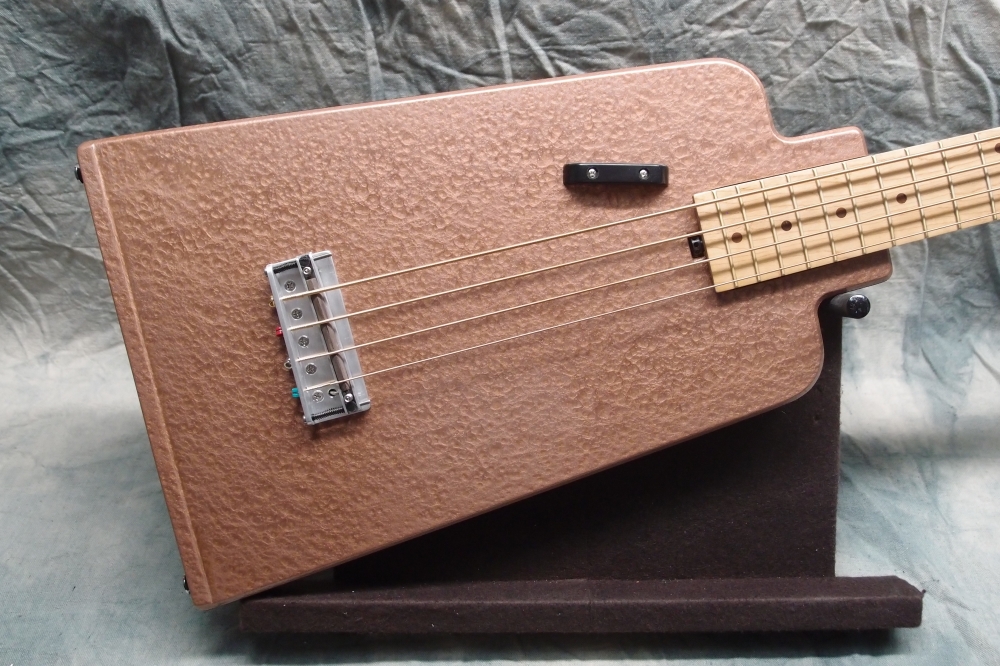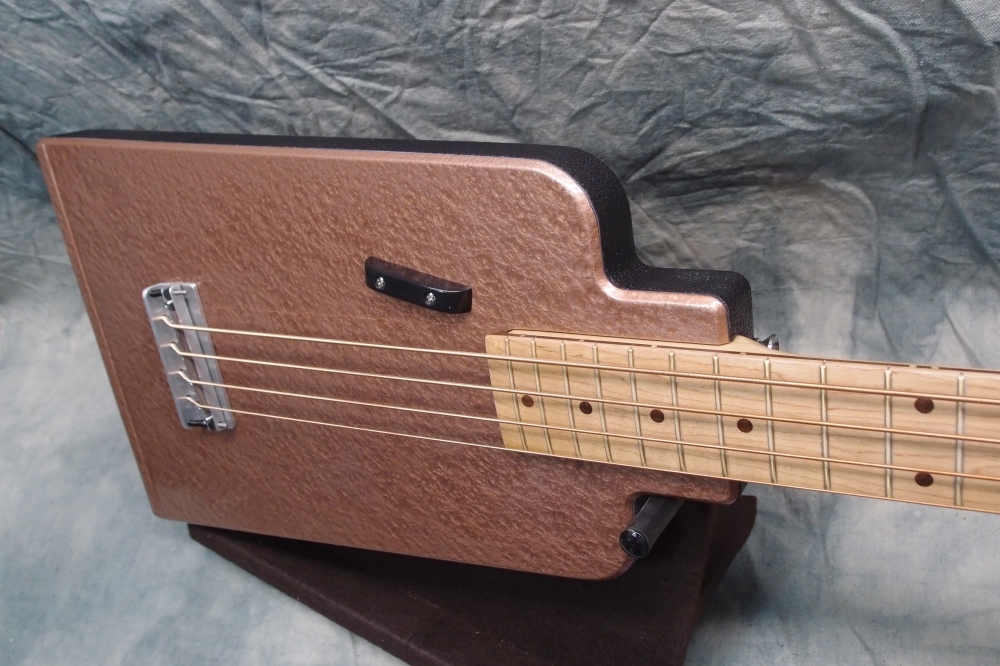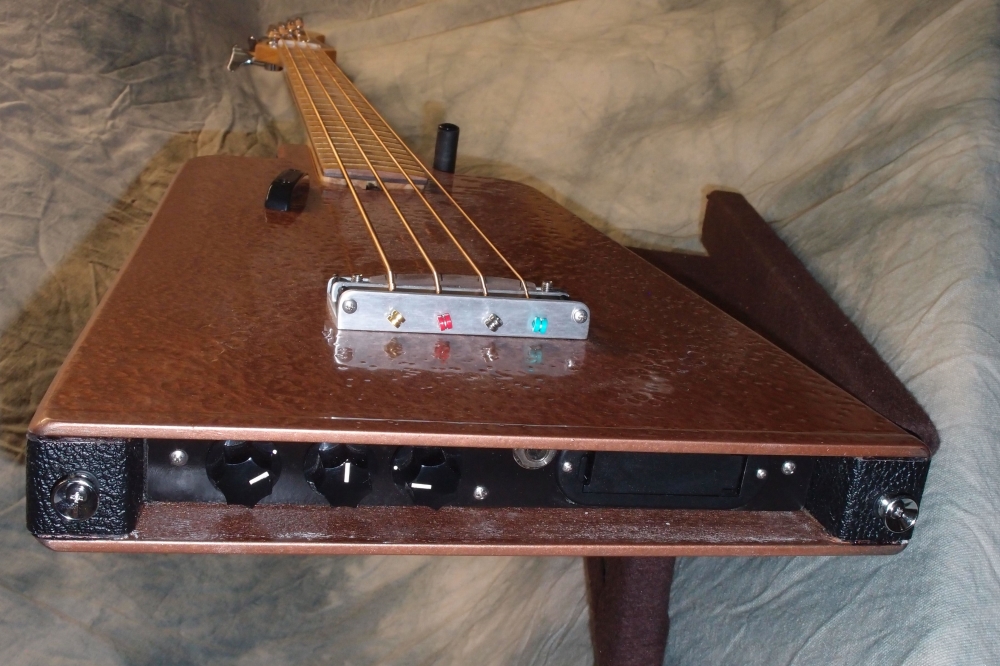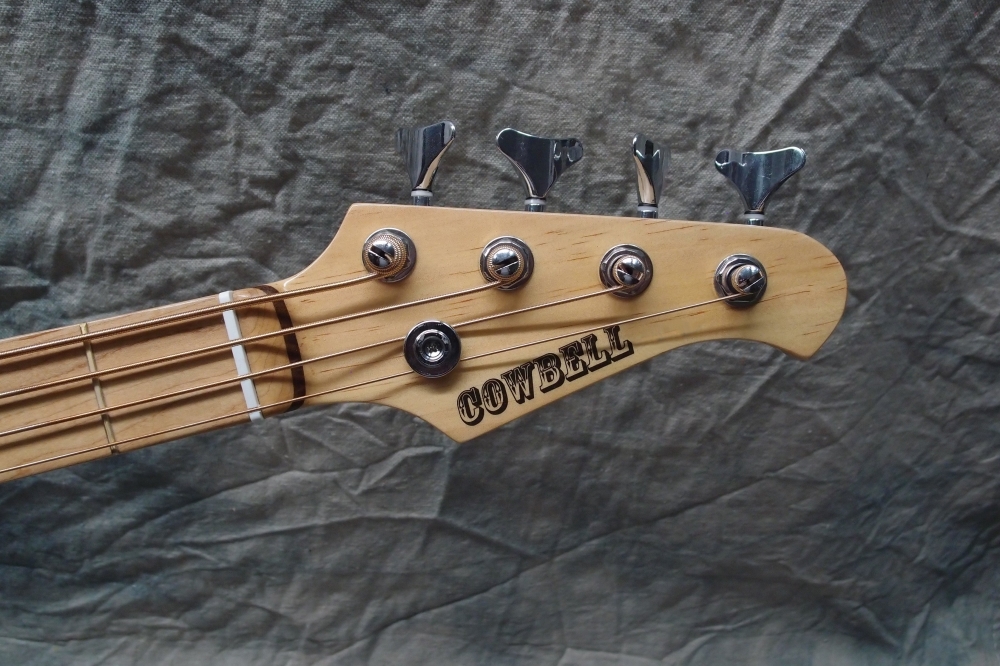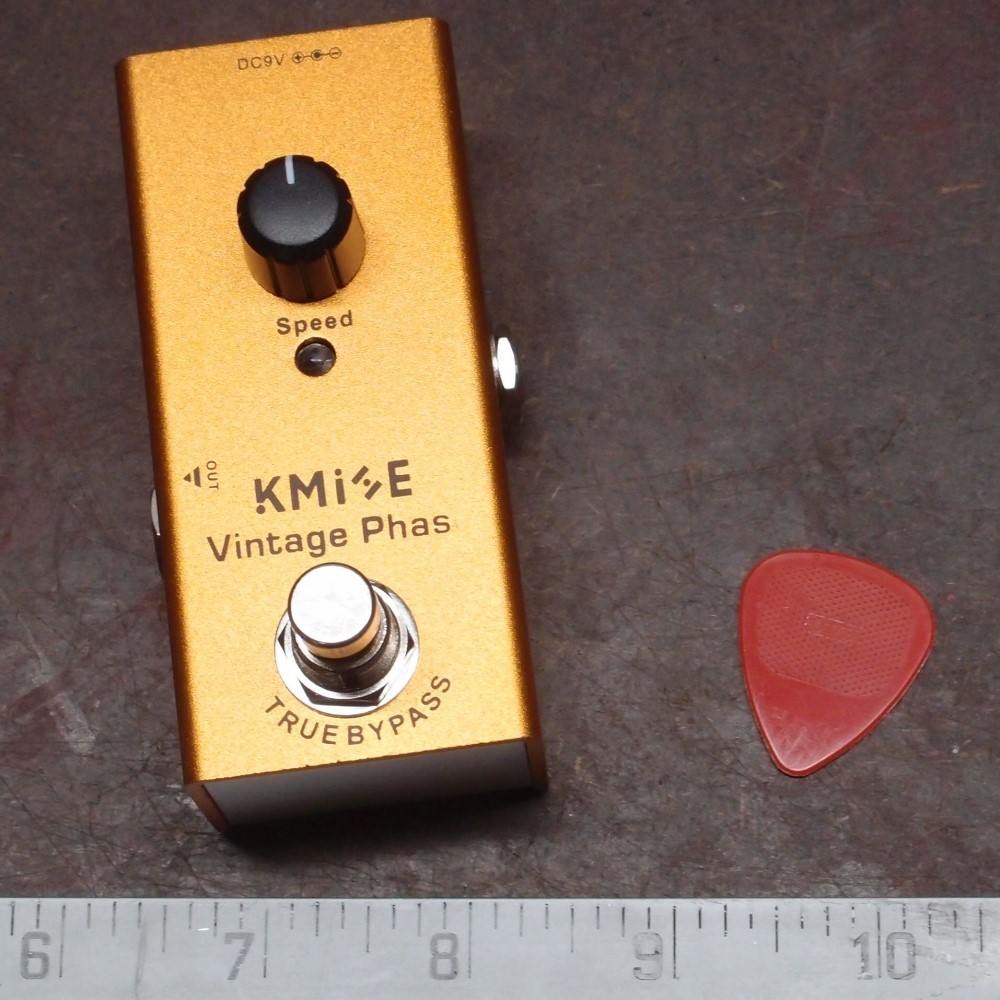August 11, 2020
More Cowbell
August 11, 2020

I had the Cowbell out the other day, and the action was awfully high with the bridge bottomed-out. I studied it for a bit, and the custom bridge I built is considerably taller than a standard Fender, and it throws off the Fender geometry. ( Normally: neck pocket 5/8" deep, neck about 1" thick at heel, and everything falls into place. )
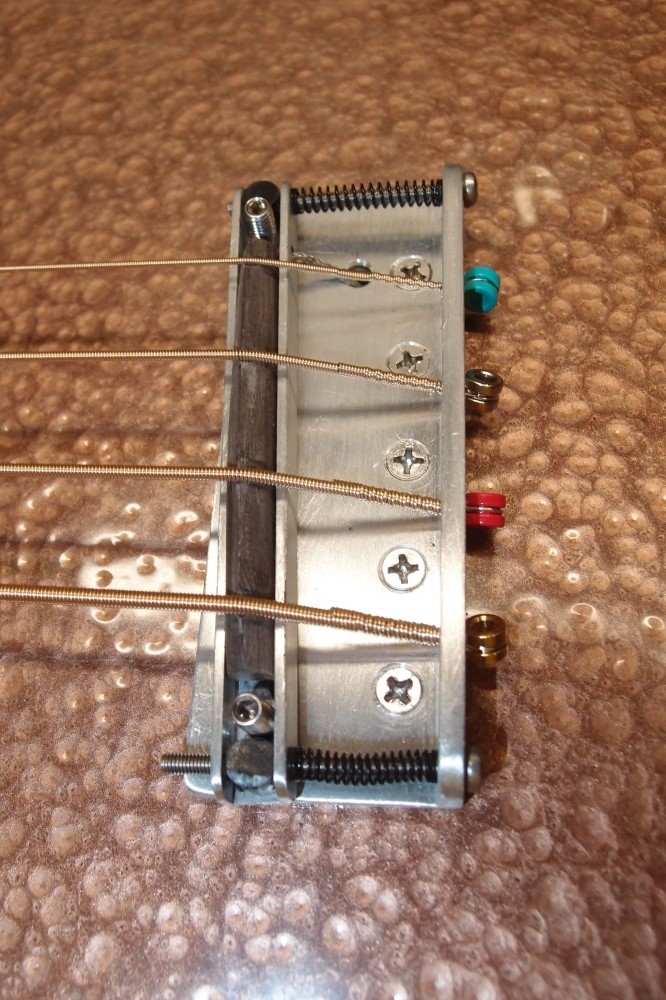
So I pulled the neck and started adding shims, eventually about a dozen layers of masking tape. This actually exceeded the back angle needed, which let me raise the bridge a little extra and have some downward adjustability. You can actually see the back angle of the neck, like a Gibsin.
This neck is buried deeply in the body with a very long heel, which is why it needed such a thick shim. If this was not a bolt-on neck, all you could do is try to mess with the truss rod. It would never play right. Or you could rout a pit in the body to mount the bridge in, not a good option for many reasons. Bolt-on construction is absolutely the best, and anything else is just a gimmick.
Now the action is right where I want it. The problem was entirely the extra height of the bridge. This Radiata neck is proving to be excellent. It is quite stable over time, and required almost no fret dressing. Radiata is much better than poplar for everything, and seems to make just as good a neck as maple. Try it !

This silly little joke of a project is actually an excellent instrument. I may have to build a cowbell guitar to go with it.





